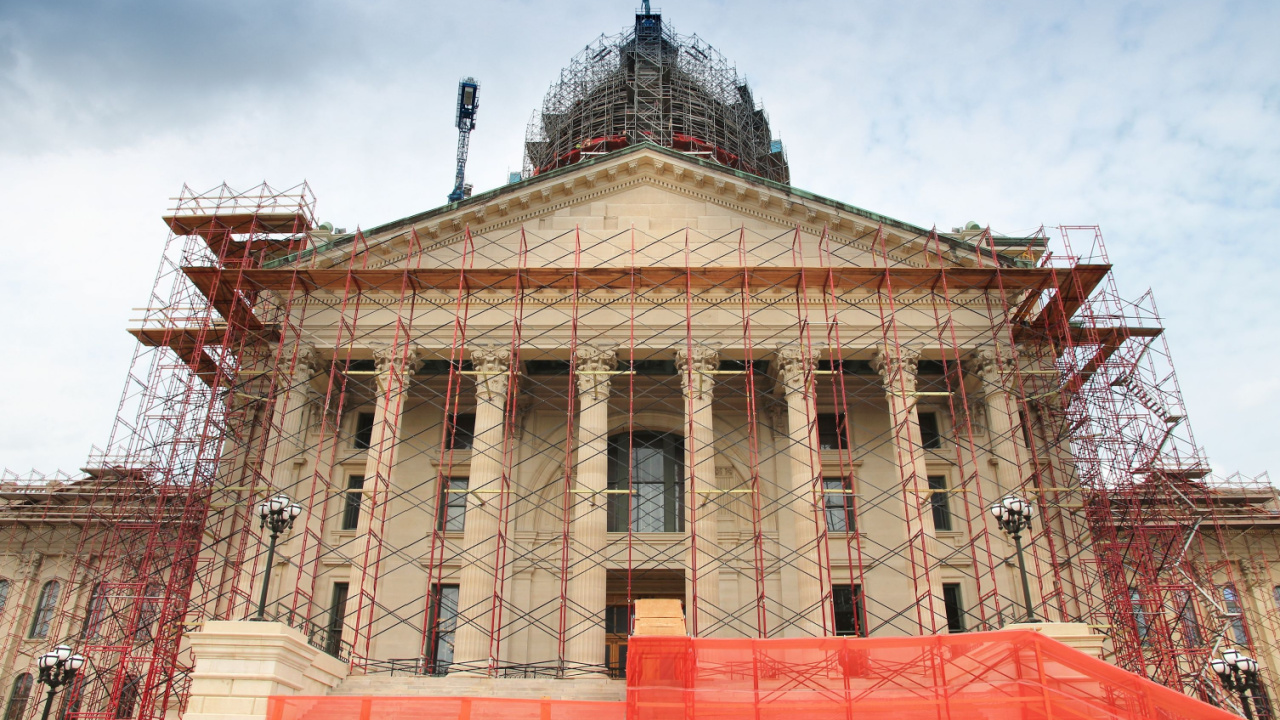
General Contractors' Insurance Protections for a Subcontractor’s Defective Work
Most companies, including contractors, purchase insurance to protect themselves from losses due to potential risks. For contractors in particular, this can include damage to the project due to faulty workmanship, either their own or that of a subcontractor. Whether a contractor will have coverage for this type of damage, however, can vary by state, despite the actual language of the policy.
For years, courts have struggled with determining the scope of coverage afforded a contractor under a form commercial general liability policy for damages resulting from faulty workmanship. In general, a CGL policy provides coverage for bodily injury and/or property damage resulting from an “occurrence.” The policies define an “occurrence” as an accident. The scope of coverage provided for faulty workmanship under a CGL policy depends on whether a court determines that the defective work was an accident or whether it is a non-accidental “business risk.” Practically, faulty work is almost always an accident in the common plain meaning of the word because contractors rarely, if ever, intend or expect their work to cause bodily injury or property damage. Nevertheless, insurers continue to argue that faulty workmanship is an expected risk that should not be subject to coverage under a basic commercial policy and very recently have had some victory in this area.
National Trend Towards Coverage for Construction Defects
Across the country, courts have taken one of three approaches to this coverage determination. The first approach is that faulty workmanship is completely covered by a CGL policy, barring any applicable exclusions attached to the policy. This includes coverage for the defective work itself as well as any resulting property damages. Jurisdictions that have recognized this broader scope of coverage include West Virginia, Indiana, Kansas, Missouri, North Dakota, Ohio, Tennessee, Texas and California. Further, some courts have determined that the faulty work of a subcontractor is also an “occurrence” under a contractor’s policy, including in Minnesota and Mississippi.
Under the second approach, the court will recognize some coverage for the property damage resulting from the faulty workmanship but not for the defective work itself. This slightly more limited coverage scope has been applied by courts in Arizona, Connecticut, Florida, Georgia, Iowa, New Jersey, New York and Pennsylvania. Likewise, when the property damage results from the defective work of a subcontractor, courts in Georgia, South Dakota and Wisconsin have provided coverage for the resulting property damage, but not the defective work itself.
Since 2012, the national trend has been in favor of coverage for the defective construction, at least for damage to work other than the insured’s own work. Despite this, under the third approach, a small minority of courts have refused to recognize any occurrence resulting from a contractor’s defective work, so there is no coverage for the faulty workmanship or any resulting property damage. Jurisdictions that have refused to recognize coverage for construction defects under a CGL policy include Arkansas, Colorado and Utah.
In late 2018, the Ohio Supreme Court, the state’s highest court, weighed in on this issue in a case involving faulty work performed by a subcontractor of the insured. Its resulting ruling is a cautionary tale for general contractors working within the state with a standard form CGL policy.
No Coverage for Subcontractor Work – The Ohio Northern Case
In 2008, Ohio Northern University contracted with Charles Construction Services (CCS) to construct a hotel and conference center. After CCS and its subcontractors completed the work, Ohio Northern discovered significant issues with the work and brought suit against CCS. CCS tendered the claim to its insurer, Cincinnati Insurance Company. Cincinnati Insurance rejected the claim and argued that it had no coverage obligations because the defective work was not an occurrence under the policy. In response, CCS asserted that any exclusion for defective work under the policy did not apply because the work was performed by a subcontractor and not CCS.
Prior to this case, Ohio’s highest court had adopted the second approach, finding that there would be no coverage for the repair and replacement of defective work itself but that any injury resulting from the defective work would be covered. The dispute between Cincinnati Insurance on the one hand and Ohio Northern and CCS on the other was whether this prior ruling also applied to the defective work of a subcontractor under the general contractor’s policy.
After the case made its way through the trial court and lower appellate court, the Ohio Supreme Court accepted the case for review, focusing on this limited issue of whether its prior ruling would apply, even where the defective work was performed by a subcontractor. In a decision contrary to the national trend, the court determined that its prior ruling did apply to subcontractor’s work in the same way it applied to general contractor’s work. In doing so, the court acknowledged that its decision went against the law nationally, but nonetheless held that “property damage caused by a subcontractor’s faulty work is not fortuitous and does not meet the definition of ‘occurrence’ under a CGL policy.”
In its decision, the court failed to address several arguments from the insured’s position, including: that the meaning of “occurrence” argued by Cincinnati Insurance and adopted by the court contradicted the long-standing meaning given to the word in every other context. Instead, the court suggested that the Ohio General Assembly could address the issue by requiring that all policies issued in Ohio define “occurrence” to include defective workmanship. Of course, this suggestion brings little comfort to the contractor-insureds that paid substantial sums for “completed operations” endorsements that were intended to provide coverage for these claims in the first place.
What’s Next for Contractors Working in Ohio?
Many commentators have written that the decision in Ohio Northern eliminates all coverage for construction defect claims. Taken to its logical conclusion, the absurdity of this argument is evident. Suppose an insured incorrectly affixes materials to the façade of a building, resulting in falling masonry that strikes and kills an innocent bystander. Or, suppose an insured incorrectly installs wiring during construction, resulting in a fire that destroys both the project and surrounding homes. Would any insurer even argue that there is no coverage for such claims?
The Ohio Supreme Court’s opinion in Ohio Northern cannot be read so broadly. The court answered a very narrow question: whether the court’s prior ruling applied to defective work of a subcontractor. The answer, according to the court, is yes. Nevertheless, it continues to be the law in Ohio that, while there is no coverage for the repair or replacement of a subcontractor’s defective work, there may still be coverage for consequential damages arising from that defective work as that foundational rule was not at issue before the Court. Had the court intended to exclude coverage for all damages resulting from the defective work, it easily could have stated its intention to do so. Thus, consequential damages arising from defective construction should still be covered under CGL policies even if the defective work of a subcontractor itself is not.
In fact, even Cincinnati Insurance itself confirmed that the court’s opinion cannot be read so broadly as to eliminate coverage for consequential damages. Cincinnati Insurance stated in briefing that the decision “correctly recognizes that consequential damages, when they exist, may be covered.” For example, Cincinnati Insurance acknowledged that a subcontractor’s CGL coverage would apply at least “where a subcontractor damages part of a construction project that is not within its subcontract.” According to Cincinnati Insurance, the court found no coverage for the consequential damages at issue in Ohio Northern because CCS was a general contractor and all of the damage to the project was CCS’s “work.”
Protection for Subcontractor Defective Work Going Forward
While the scope of the Ohio Northern ruling may continue to be challenged in the Ohio courts, Ohio’s contractors should nonetheless consider purchasing additional coverage, particularly if they are acting as a general contractor. Numerous insurers now offer endorsements that reinstate the coverage that the Ohio Northern decision arguably eliminated. For example, some insurers amend their insuring agreement to specifically cover property damage to an insured’s work if it is performed by a subcontractor and falls within the products-completed operations hazard. Other insurers “deem” that property damage to the insured’s work is caused by an occurrence if it is unexpected and unintended. Yet other insurers amend the definition of “occurrence” to include “subcontracted property work damage.”
There may be material differences in how these various forms operate and the extent of coverage they provide, which is a subject that is beyond the scope of this article. Contractors in Ohio should contact their insurance brokers to discuss the options available to them and, if appropriate, should contact coverage counsel to discuss how the various, differing forms would operate. For their part, owners and developers should amend their construction contracts to compel contractors to purchase such endorsements.
While it is understandable that contractors, owners and developers will question paying higher premiums to purchase additional coverage under a CGL form policy for claims that they always intended would be covered, an ounce of prevention is worth a pound of cure in this case, and it is better to guarantee coverage in the future rather than be left personally liable for all of the resulting damages of a subcontractor’s work.
Related stories








